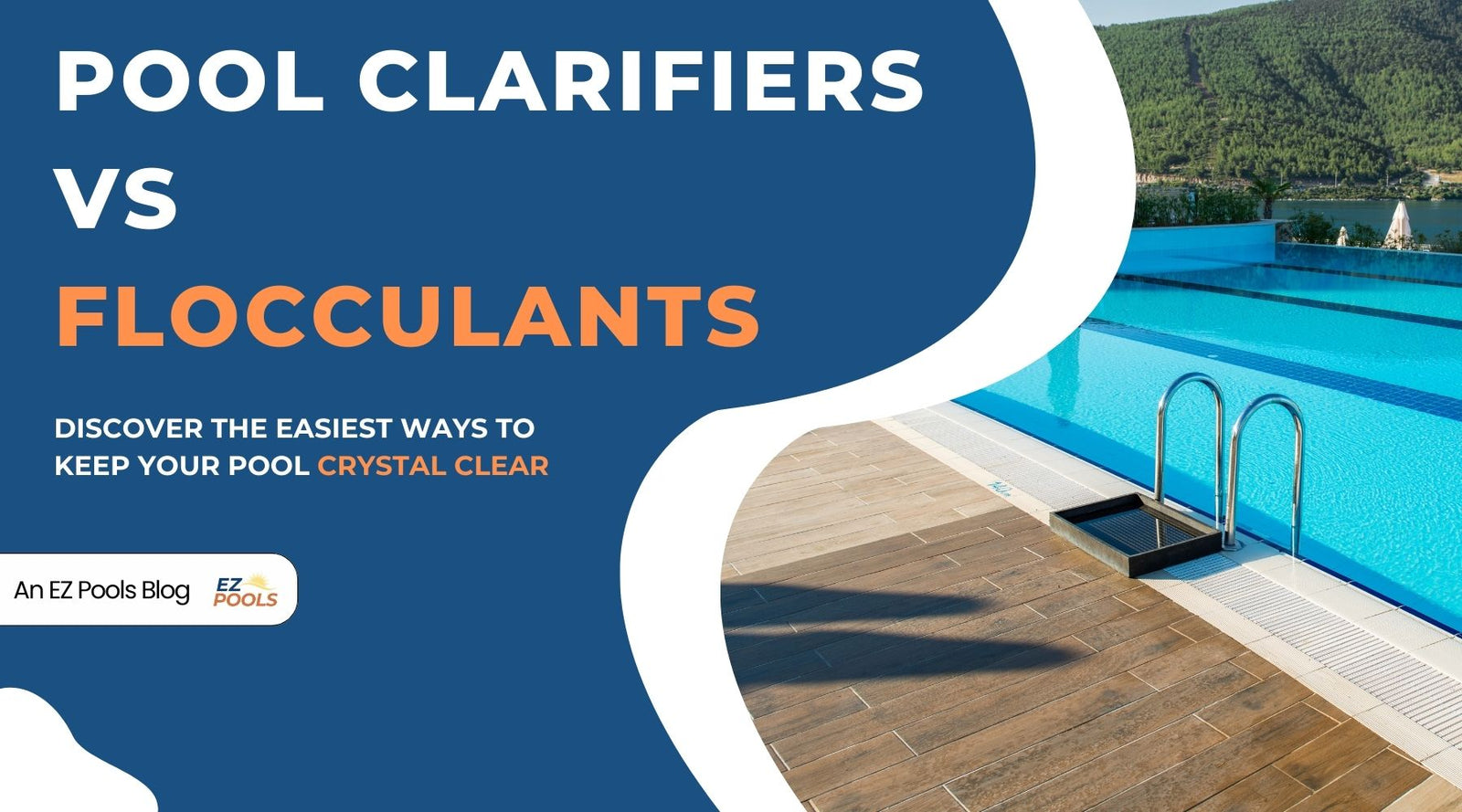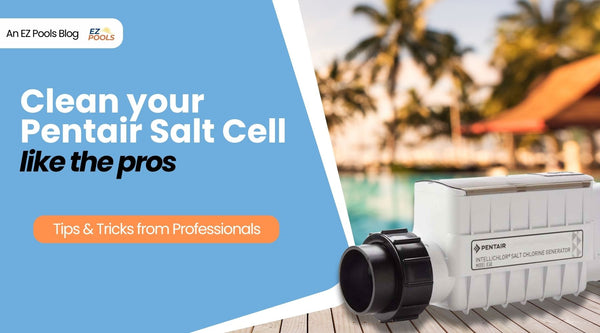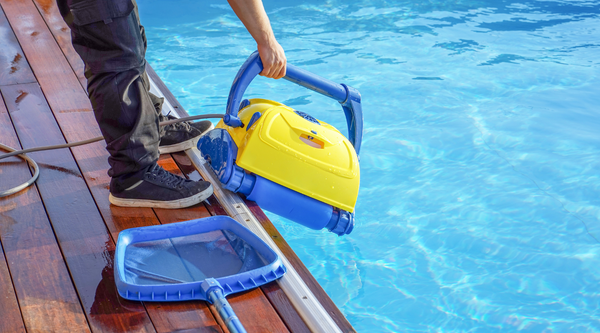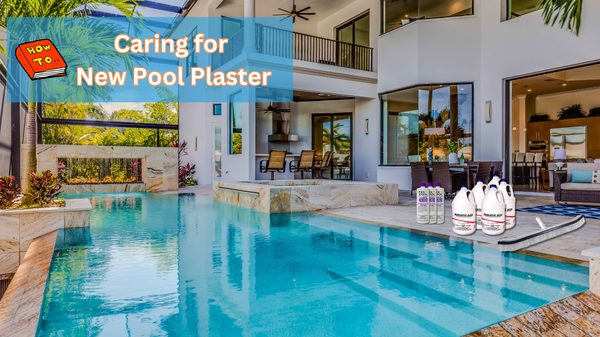Pool Flocculant vs. Pool Clarifier

In maintaining a sparkling clear swimming pool, understanding the differences between flocculants and clarifiers is crucial. Many pool owners often grapple with choosing the right chemical to tackle murky water, leading to confusion between these two effective solutions.
This blog post will delve into the specifics of flocculants and clarifiers, exploring their functions, applications, and the scenarios in which each is most beneficial. By the end, you'll have a clearer grasp of "flocculant vs clarifier" and how to utilize these products for optimal pool maintenance.

Understanding Pool Clarifiers
Pool clarifiers are chemical solutions formulated to improve the clarity of pool water by eliminating suspended particles. They function by aggregating tiny debris, facilitating easier capture by filtration systems. Available in different formats, such as liquid and tablet varieties, clarifiers offer distinct advantages and application techniques.
Liquid pool clarifiers, for instance, are particularly effective in swiftly addressing cloudiness. When added to the water, these chemicals bond with tiny particles—like dirt and algae—to form larger aggregates that can be filtered out more efficiently. Following the application of a clarifier, it's essential to backwash your filter thoroughly to remove the collected debris. This process not only enhances clarity but also ensures that your filtration system operates at peak efficiency.

What is Flocculant?
Flocculants serve a more specialized purpose compared to clarifiers. While both aim to improve water clarity, flocculants excel in situations where suspended particles stubbornly remain in the pool water due to their minuscule size.
A swimming pool flocculant works by clumping these tiny particles into heavier masses that then settle on the pool floor after a short waiting period. Once the pool has cleared and the clumps are visible on the pool floor, they can be vacuumed and removed from the pool water.
Understanding when to use each product is key; pool clarifiers are ideal for routine maintenance while flocculants shine during more severe clarity issues. Embracing this knowledge empowers pool owners to maintain pristine water effortlessly.
To recap:
- Clarifiers are typically used as a quick-fix, or a maintenance routine
- Flocculant is used as a one-time solution to clear a stubbornly-cloudy pool
Key Differences Between Flocculants and Clarifiers
The primary distinction between flocculants and pool clarifiers lies in their respective mechanisms and ideal applications. Pool clarifiers are often the go-to solution for routine maintenance, addressing mild cloudiness effectively by binding smaller particles together, which can then be easily filtered out.
Conversely, flocculants tackle more severe water clarity issues where particles are too light to settle naturally. By aggregating these tiny contaminants into larger clumps, flocculants ensure they sink to the bottom of the pool.
In practice, this means that if your pool remains cloudy despite using a clarifier, it may be time to turn to a flocculant for deeper cleaning. After applying flocculant, waiting several hours allows the particles to coagulate fully before you either vacuum them up or let your robotic cleaner do the work. Understanding these intricacies not only helps in selecting the right product but also enhances overall pool health. Ultimately, knowing when to use each chemical ensures that your swimming experience remains safe and enjoyable—crystal clear water at its best!
How to Floc a Pool
A step-by-step guide on floccing a swimming pool. Important: Flocculants cannot be used on Cartridge Filter Systems unless you have a "waste" valve!
1. Water Chemistry
For the flocculant to work as intended, you need to make sure that your pool is properly balanced. Pool floc will only work at pH levels between 7.0 and 7.4 for Chlorine Pools, and between 7.2 - 7.6 for Salt Water and Bromine pools. Your chlorine level should be 1 - 3 PPM, or 2 - 6 PPM for Bromine pools.
Important: Floccing a pool involves vacuuming to waste. We recommend over-filling your pool to make sure you have enough water to keep the pump primed when the time comes.
2. Switch to Recirculate
Turn off your pump and filter system, and switch your multi-port valve to recirculate. Pool flocculants work by "clumping" particles together, and these clumped particles will destroy your filter if they go through them. As such, you want to make sure you switch your valve into recirculate so you can bypass the filter.
If you do not have a multi-port valve, or do not have a means to bypass your filter system, we would recommend against using floc to clear up your pool.
3. Adding the Flocculant
Now that your pool is properly balanced & you've got the system in recirculate, its time to add the floc. Evenly distribute the floc around the perimeter of the pool, at a rate of around 32 oz (1 full bottle) per 10,000 gallons.
4. Wait 2 Hours
Most pool flocculants instruct users to leave the filter system in recirculate for at least 2-hours to allow the floc to evenly distribute throughout the entire pool. Make sure you read the instructions on your product as some manufacturers may have different wait-times. Once this 2 hour period is up, you can turn off your filter system entirely.
5. Allow the Flocc to Settle
With your filter system off, now its time to watch the magic happen. As we mentioned a little bit ago, Pool Flocculants work by combining and clumping the smaller particles together. Over some period (depending how cloudy your pool is), these particles will group-up and sink to the bottom of your pool.
Typically, you'll notice that the longer you wait, the better results you'll get. We recommend waiting until your pool is completly clear prior to vacuuming up all that debris.
Most of the time, the dust and debris will settle after 12 - 24 hours.
6. Vacuum the Debris
Now that your pool has (hopefully) cleared up, its time to get those pesky particles out of your pool. Switch your multiport valve into the Waste position, and get ready to vacuum. Avoid disturbing the debris on the bottom as much as you can, as these particles can dissolve back into the water if the water is disrupted too much. Do NOT vacuum the flocc clumps through the filter!
Once you've vaccumed up all the debris, you're good to resume business as usual. As always, we'd recommend checking your chemistry, re-balancing your pool, and keeping a keen eye on your filters pressure over the next few days.
Conclusion
Both flocculants and pool clarifiers serve important roles in maintaining the clarity of swimming pool water. While clarifiers are ideal for routine maintenance and quick fixes, flocculants are a powerful tool for addressing serious clarity problems. Choosing the right product depends on your specific needs and the condition of your pool. By understanding the differences and applications of these two chemicals, you can ensure your pool remains clean, clear, and inviting for all to enjoy.
Frequently Asked Questions
Although we've covered most of what you need to know, here are answers to some frequently asked questions regarding pool flocculant and pool clarifiers.
Can you swim with flocculant in the pool?
No- you cannot swim with flocculant in the pool. The water must be completely still in order for the flocculant to bind the contaminants together, which is why the filter system also must be left of for a period of 12 - 24 hours after it is added.
How long does pool flocculant take to work?
Once flocculant is added to a swimming pool, the filter system should be left in re-circulate for around 2 hours. After that, the filter system should be turned off for an additional 12 - 24 hours, allowing debris to settle on the bottom of the pool.
How long does it take for a pool clarifier take to work?
Pool clarifiers can take up to one to two days to work, depending on a few factors. If you notice that the pressure on your filter is higher-than-normal or has risen more than it normally does, that's a good indicator that the clarifier is working.
Our Blog
Questions?
Don't hesitate to contact our support team at support@ezpools.com, or by submitting a form on our website! We've got pool experts standing by, ready to help.
Contact Us


